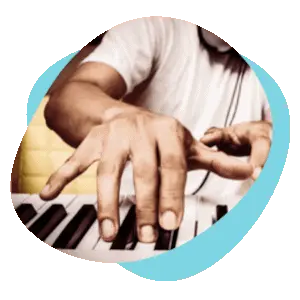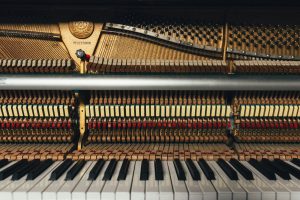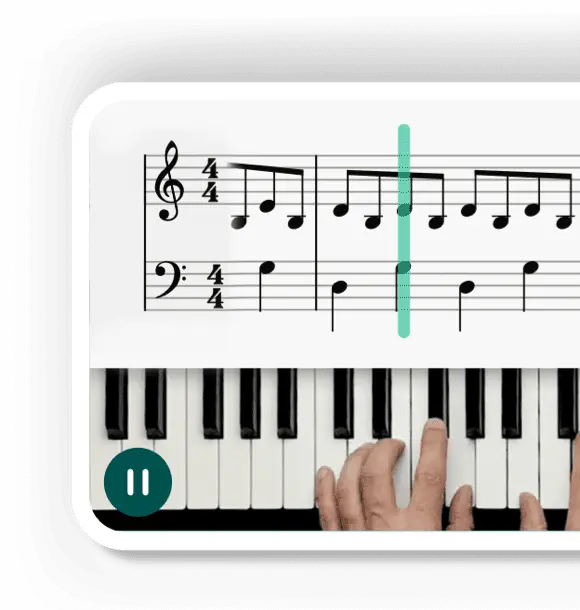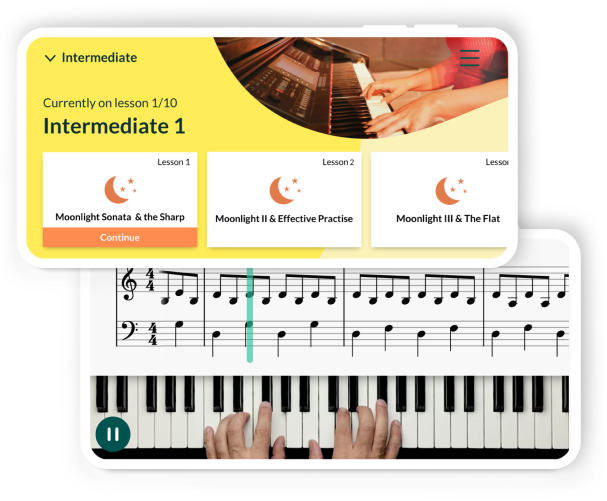Imagine sitting at a grand piano, your fingers gracefully dancing across the keys, producing a cascade of notes that flow like a sparkling river. This is the magic of arpeggios, a fundamental technique in piano playing that transforms simple chords into mesmerizing musical sequences. But what exactly are arpeggios, and why are they so crucial for aspiring pianists?
Arpeggios are more than just a series of notes. They are the backbone of piano music, offering a rich texture and depth that chords alone cannot provide. When you play an arpeggio, you’re not just playing notes; you’re weaving a tapestry of sound that adds dimension and emotion to your music.
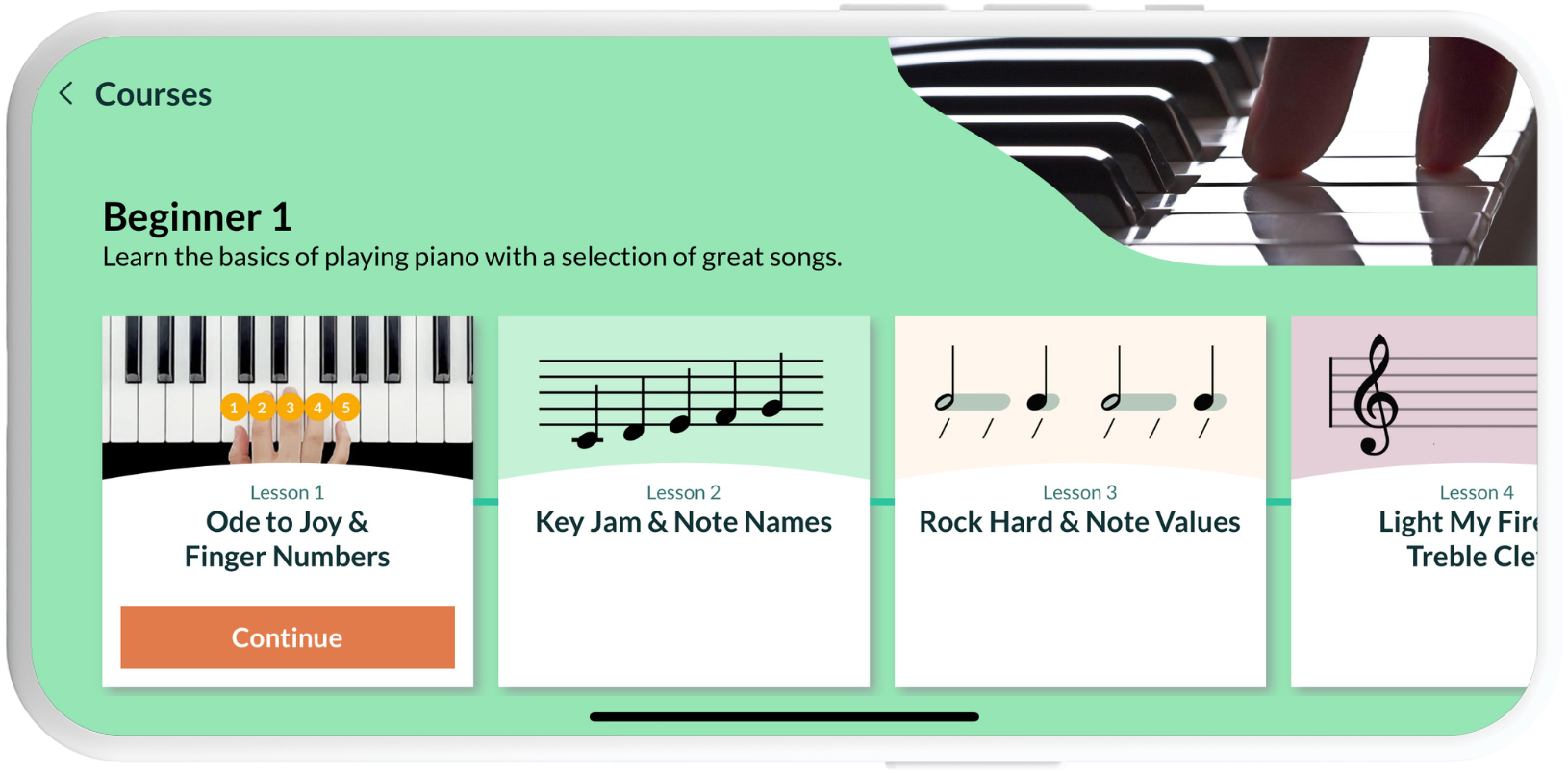
No credit card details required
Why learn arpeggios?
For those embarking on their piano journey, understanding and mastering arpeggios is not just a skill – it’s a gateway to musical expression. Whether you’re playing classical sonatas, jazz standards, or contemporary pop, arpeggios are a versatile tool that can elevate your playing from ordinary to extraordinary.
In this article, we’ll explore how to play arpeggios on the piano, from reading them in sheet music to incorporating them into your playing with elegance and ease. So, let’s dive into the world of arpeggios and discover how they can enrich your piano playing experience.
Reading arpeggios in sheet music
Arpeggios might seem daunting at first glance, especially when you encounter them in piano sheet music. However, with a bit of knowledge and practice, reading arpeggios becomes as intuitive as reading a book.
Notation of arpeggios
Arpeggios are typically notated two different ways in piano music:
- As chords with a wavy vertical line in front of them, indicating that the notes should be played in quick succession, from the lowest to the highest note. This notation is your cue to transform a block of harmony into a flowing, melodic line.
- As chords spelled out in a row of rhythm, such as a line of eighth or sixteenth notes. This notation is used when the composer wants a specific rhythm or sequence played, as opposed to just a more “free” interpretation.
Recognizing patterns
One of the keys to mastering how to play an arpeggio on the piano is recognizing patterns in the music. Arpeggios often follow predictable structures, making it easier to anticipate and prepare for them. For instance, a C major arpeggio will always consist of the notes C, E, and G, played in a rolling motion.
Practice makes perfect
As you become more familiar with these patterns, reading and playing arpeggios will become second nature. It’s like learning a new language; the more you practice, the more fluent you become. So, take the time to study different arpeggio patterns in your sheet music, and soon you’ll be reading them with ease and confidence.

Techniques for playing arpeggios
The secret to playing arpeggios beautifully lies in your hands. Proper hand positioning and finger techniques are essential for smooth, fluid arpeggio playing.
- Finger placement: Each arpeggio has a recommended finger pattern that facilitates smooth transitions between piano notes. For example, a C major arpeggio typically uses the 1-2-3-1-2-3-5 fingering pattern in the right hand.
- Wrist movement: Your wrist plays a crucial role in arpeggio execution. A flexible wrist allows for a flowing motion, helping you glide over the keys effortlessly.
Coordinating both hands
Playing arpeggios with both hands can be challenging but incredibly rewarding. Start slowly, ensuring each hand is confident in its part before gradually increasing the speed and synchronizing both hands.
- Mirror movements: In many arpeggios, the hands perform mirror movements. Practicing hands separately at first can help you understand each hand’s role before combining them.
- Consistency in dynamics: Ensure both hands contribute equally to the arpeggio’s dynamics, avoiding one hand overpowering the other.
Transitioning between different arpeggios
Transitioning smoothly between different arpeggios is a skill that comes with practice. Here are some tips:
- Anticipate the next arpeggio: Always think one step ahead. As you play one arpeggio, prepare your hands for the next.
- Practice common transitions: Some arpeggio transitions occur more frequently. Identify and practice these to build confidence.
By mastering these techniques, you’ll be able to play arpeggios with the grace and precision that make piano music so captivating.
Practicing arpeggios
The journey to arpeggio mastery begins with the basics. Starting with simple arpeggios allows you to build a solid foundation before tackling more complex patterns.
- C major arpeggio: Often the first arpeggio learned, the C major arpeggio (C-E-G) is played without any piano black keys, making it an ideal starting point.
- Gradual progression: After mastering the C major arpeggio, gradually introduce arpeggios with one or two black keys, such as D major (D-F#-A) or E flat major (E♭-G-B♭).
As your confidence grows, challenge yourself with more complex arpeggios that involve intricate fingerings and hand movements.
- Incorporating black keys: Arpeggios like F# major or Bb minor add complexity and require precise finger placement on piano.
- Seventh chords: Arpeggios based on seventh chords, like G7 (G-B-D-F), introduce an additional note, adding richness to your playing.
Mastering fast arpeggios
Playing arpeggios quickly and smoothly is a skill that distinguishes good pianists from great ones. Here’s how to master fast arpeggios:
- Relaxed hand position: Tension is the enemy of speed. Keep your hands relaxed to facilitate quicker movement.
- Even tempo: Use a metronome to practice maintaining an even tempo, gradually increasing speed without sacrificing rhythm or note clarity.
Advanced arpeggios often require leaping between octaves and dynamic changes, adding complexity and expressiveness to your playing.
- Hand leaping techniques: Practice jumping between octaves smoothly, ensuring each note is hit accurately. Start slowly, then increase speed as you gain confidence.
- Dynamic control: Experiment with crescendos and decrescendos within arpeggios to add emotional depth and interest.
Strategies for fast arpeggios
Here are some strategies to help you play arpeggios quickly and effectively:
- Finger independence exercises: Strengthen each finger with exercises designed to improve independence and agility.
- Practice in chunks: Break down complex arpeggios into smaller sections, mastering each before putting them together.
- Visualization: Before playing, visualize the arpeggio pattern. This mental preparation helps in executing fast arpeggios more fluidly.
Summary of the video
This educational video embarks on a comprehensive exploration of arpeggios on the piano, progressing through 13 levels of complexity. Starting with basic arpeggios in a simple chord progression, the difficulty gradually escalates, showcasing a wide range of techniques and styles.
The video offers practical tips for practicing and mastering these techniques, emphasizing the importance of relaxation and efficient movement. The video concludes with a reflection on the relationship between technical difficulty and musicality, reminding viewers that complexity doesn’t always equate to better music.
The role of arpeggios in musicality
Arpeggios are not just technical exercises; they are powerful tools for musical expression. Understanding how to play arpeggio patterns can transform a piece from plain to profound.
- Emotional depth: Arpeggios add a layer of emotional depth to music, allowing for expressive crescendos, decrescendos, and nuanced phrasing.
- Rhythmic variety: They introduce rhythmic diversity, breaking the monotony of straight chords and adding a dynamic pulse to the music.
Mastering arpeggios paves the way for advanced piano techniques. They are the stepping stones to more complex playing styles and compositions, offering a foundation upon which to build your musical repertoire.
Tips and tricks for efficient practice
Efficient practice is key to mastering arpeggios. Here are some tips to make your practice sessions more effective:
- Consistent practice schedule: Dedicate regular time to practice arpeggios. Consistency is more important than the length of each session.
- Focused goals: Set specific goals for each practice session, such as mastering a particular arpeggio or increasing speed.
Common mistakes to avoid
Be aware of common pitfalls when learning arpeggios:
- Ignoring fingerings: Proper fingering is crucial for playing arpeggios efficiently. Ignoring recommended fingerings can lead to awkward hand movements and slower progress.
- Neglecting hand independence: Practice hands separately before trying to play arpeggios with both hands together.
Don’t just practice arpeggios in isolation; incorporate them into your regular piano pieces. This helps in understanding their practical application and makes practice more enjoyable.
Integrating arpeggios into your piano journey
Arpeggios, when mastered, become a part of your unique musical voice. They allow you to interpret and play music with a level of sophistication and finesse that distinguishes you as a pianist.
Remember, the path to arpeggio mastery is a journey, not a destination. Enjoy each step, celebrate your progress, and keep pushing your boundaries. With dedication and practice, arpeggios will become a natural and expressive part of your piano playing, enriching both your skills and your musical experiences.
Author of this blog post:

Eddie Bond is a multi-instrumentalist performer, composer, and music instructor currently based in Seattle, Washington USA. He has performed extensively in the US, Canada, Argentina, and China, released over 40 albums, and has over a decade experience working with music students of all ages and ability levels.






